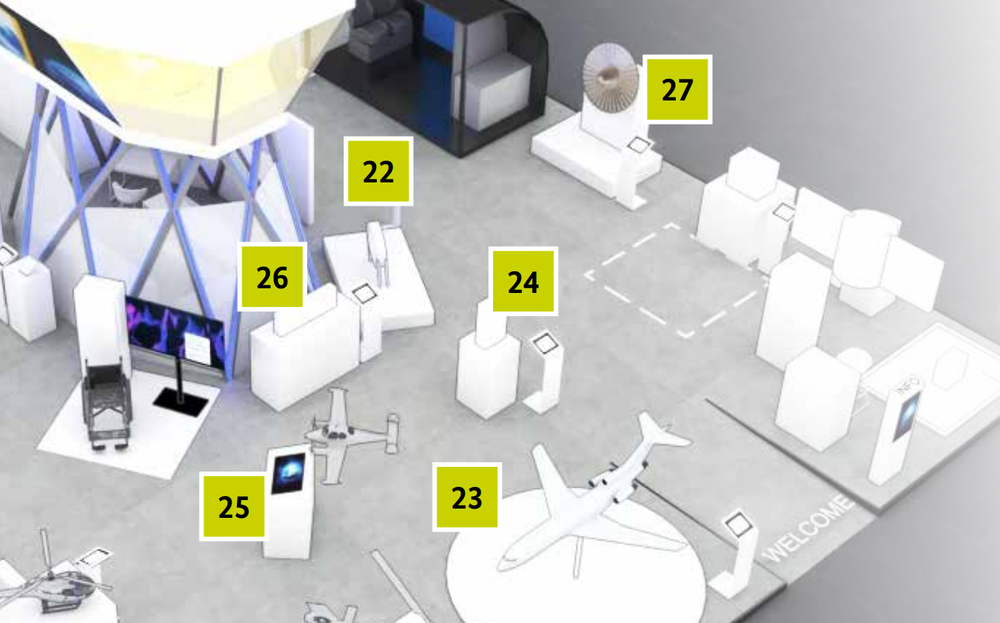Drive
22: High-speed low-pressure turbine
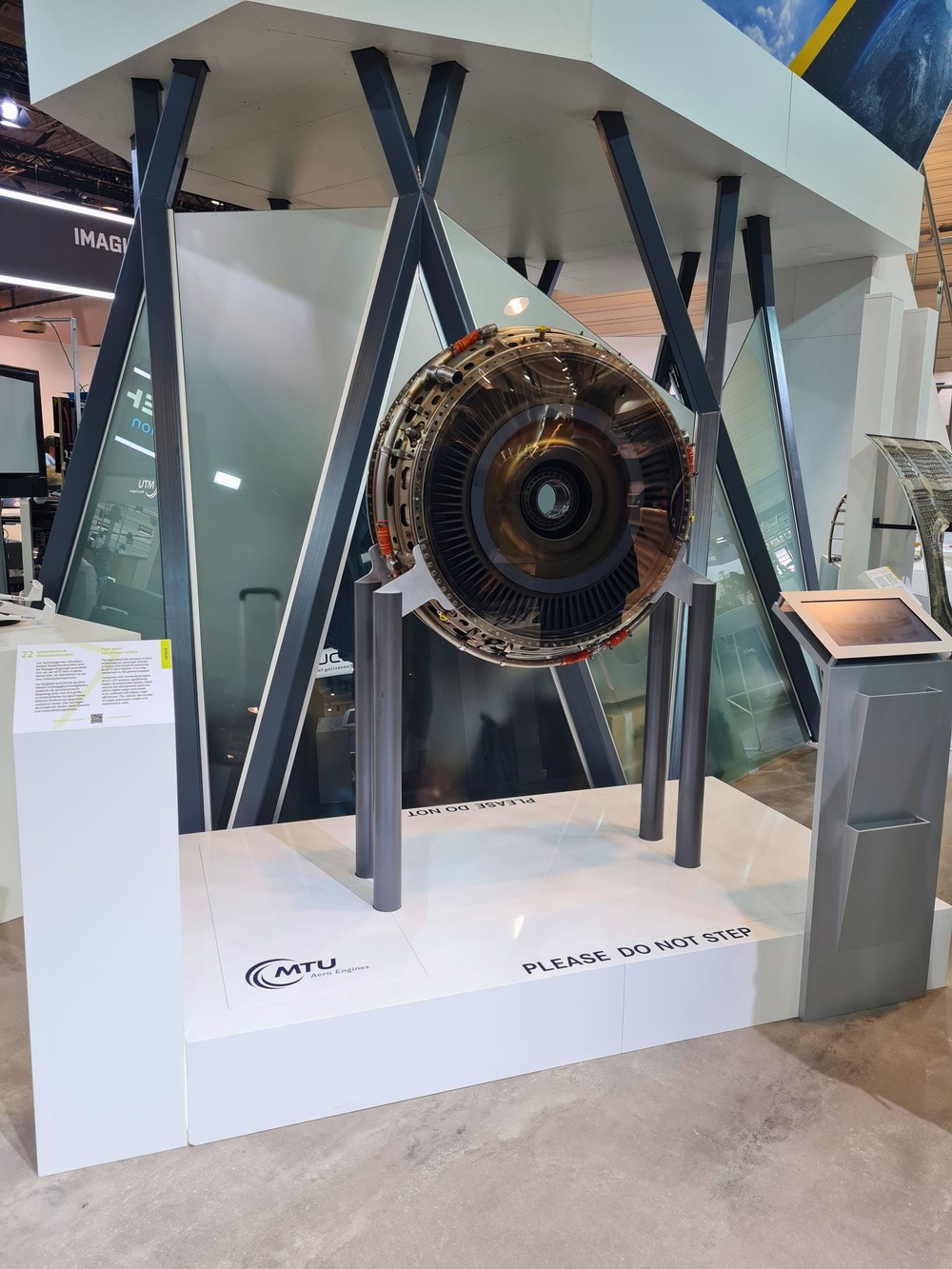
The high-speed low-pressure turbine technology for passenger aircraft is mastered exclusively by MTU Aero Engines. It is a key component in the geared turbofan. In comparison, it achieves significantly higher circumferential speeds, which reduces the aerodynamic load and allows larger stages to be realised with higher stage efficiencies. This reduces the number of stages and lowers weight and maintenance costs.
Further information can be found at https://www.mtu.de/ and at https://aeroreport.de/de/good-to-know/kurz-erklaert-niederdruckturbine
MTU Aero Engines AG
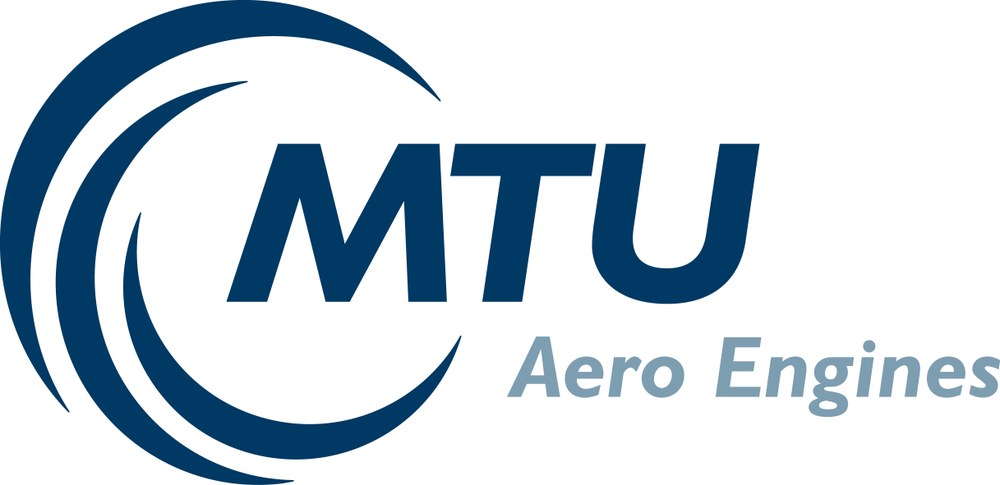
MTU Aero Engines
MTU Aero Engines AG is Germany's leading engine manufacturer. MTU's core competences lie in low-pressure turbines, high-pressure compressors, turbine center frames and manufacturing and repair techniques. In the commercial new engine business, the company plays a key role in the development, manufacture and sale of high-tech components within the framework of international partnerships.
23: UpLift Flying Testbed Dornier D328 (D-CUPL)

At the ILA 2024, the Dornier 328 "UpLift" will be on display at the stand of the Federal Ministry of Economics and Climate Protection (BMWK). The DLR research aircraft will be used as a flying test bed for environmentally friendly aviation technologies, for example for fully synthetic fuels or hydrogen as possible sustainable aviation fuels of the future. The flying DLR test laboratory is to be used by national industry, but also by small and medium-sized enterprises and start-ups as well as research institutions, to test new, environmentally friendly system, fuel and propulsion technologies under real conditions and to significantly accelerate their practical application in aviation.
In addition to research, DLR is also conducting the flight experiments. The necessary modifications to the aircraft are developed and realised in close cooperation with the aircraft manufacturer Deutsche Aircraft or other qualified development companies. The aircraft is stationed at the DLR site in Braunschweig, where it joins the largest civilian research fleet in Europe.
Further information can be found at https://www.dlr.de/de/forschung-und-transfer/forschungsinfrastruktur/dlr-forschungsflotte/uplift-dornier-328-100
Deutsches Zentrum für Luft- und Raumfahrt e.V. (DLR)

DLR is the research centre for aeronautics and space in Germany. It conducts research and development in aeronautics, space, energy, transport, security and digitalisation. The German Space Agency at DLR is responsible for German space activities on behalf of the Federal Government. Two DLR project management agencies oversee funding programmes and support the transfer of knowledge.
24: Modern PEM fuel cell stack
A fuel cell stack is a cell stack consisting of a large number of bipolar plates, membrane electrode assemblies (MEAs), seals, end plates and the tensioning system.
Technical data:
- Proton exchange membranes
- Fuel cell technology with metallic bipolar plates and 399 cells
- Power class approx. 100kW with an operating temperature of 80-95 °C and a conversion efficiency of 50-55% (LHV)
- Manufacturer: EKPO from Dettingen, Germany
Function:
- Conversion of gaseous H2 together with air into electric current
Research project:
- In various complementary projects, the BMWK enables Airbus and its partners to research the aviation-specific adaptation of existing technology modules, which are designed to achieve higher power density, reliability and durability as well as to ensure safety and certifiability.
- 12 such stacks are interconnected as a multi-stack system to operate a 1.2 MW aircraft propulsion demonstrator.
- Airbus is working with the Aerostack GmbH joint venture to develop an airworthy stack.
- The flying appliance must withstand environmental conditions of low pressures and low temperatures as well as dry air and vibration.
EKPO develops and produces PEMFC stack modules based on patented designs for metallic bipolar plates, end plates and media supply units, offering many advantages for integration into fuel cell systems. EKPO's low-temperature fuel cell stacks are characterised by excellent performance and durability properties and can be used for a wide range of vehicle categories. A chemical reaction between oxygen and hydrogen generates electrical energy which, depending on the system design, can directly supply an electric motor or charge battery modules in the vehicle. The NM12 Single PEMFC stack module is designed for applications with high power requirements (>100 kW) in the automotive and railway sectors.
With our established processes and our experience in production technology, we have decisive advantages for series development and production in the fuel cell sector.
- Automated, high-precision and interlinked production of metallic bipolar plates
- Development and production of plastic end plates and media modules suitable for series production
- Flexible and automated stacking processes and stack assembly
Parameter
- Customised stack solutions with outputs of up to 123 kWel
- Hydrogen-air operation, liquid-cooled, pressurised operation up to 2.5 bar
- IP housing (6KX, X6K, X7) with EMC shielding
- Compact integrated cell voltage monitoring (CVM)
- Integrated media control, water separator and media monitoring, robust sensors and actuators in accordance with automotive standards
- Stack module validated in accordance with IEC 62282 and GB/T 33978
Benefits
- High power density thanks to lightweight, compact stack design
- Highly dynamic power delivery
- Robust component and stack design suitable for mass production with long service life and minimal power loss
- Proven cold start performance and durability
- System simplification through integration of functions in the media supply unit of the stack (sensors, actuators and valves)
- Metallic bipolar plates in a patented design
Specifications
- Number of cells 399, nominal stack power 123 kW
- Stack power density 4.2 kW/l, cell block power density 6.2 kW/l
- Nominal stack voltage 215 V, nominal current 570 A (2.28 A/cm2), maximum current 625 A (2.50 A/cm2)
- Nominal operating pressure 2.5 bara
- Active area 250 cm2, cell spacing 1.27 mm, vertical cell orientation
- Dimensions incl. housing 402x287x700 mm
25: D328ALPHA: Paving the way for drive systems of the future
Information can be found at https://www.dlr.de/de/forschung-und-transfer/forschungsinfrastruktur/dlr-forschungsflotte/uplift-dornier-328-100
26: HY4 - emission-free flying with hydrogen
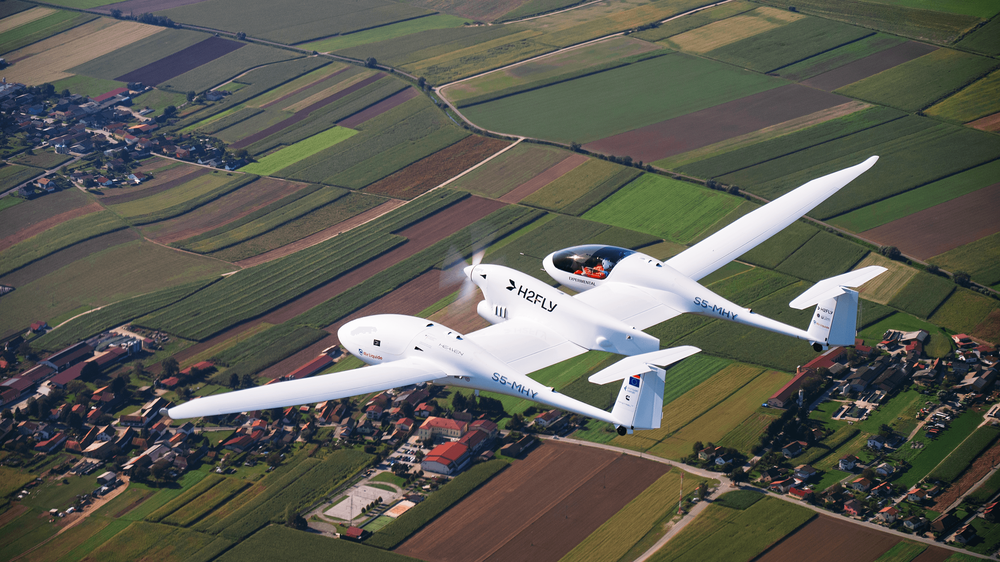
H2FLY GmbH
The HY4 is the world's first hydrogen-electric experimental aircraft developed by H2FLY and certified for passenger flights. The HY4 took off for the first time in 2016 and has since been the carrier of numerous technological leaps in the field of hydrogen-electric propulsion systems for aviation. H2FLY has received significant support from the Aviation Research Programme (LuFo) of the Federal Ministry of Economics and Climate Protection (BMWK) and from European funding in the Clean Hydrogen Partnership.
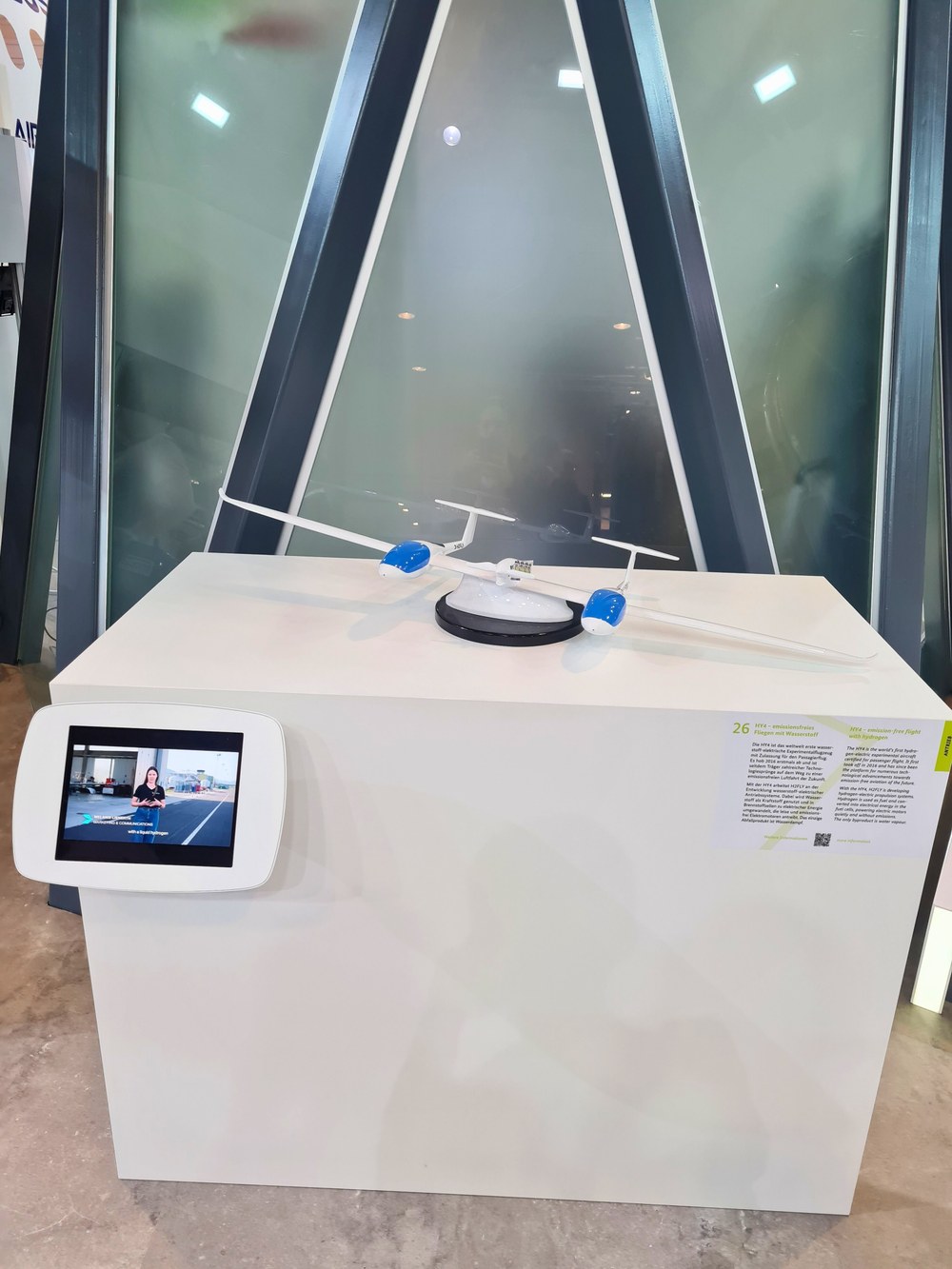
With the HY4, H2FLY is consistently working on the further development and commercialisation of hydrogen-electric propulsion systems. Hydrogen is carried on board the aircraft as fuel and converted into electrical energy in the fuel cells. The electrical energy is used to power electric motors quietly and emission-free. The only waste product is pure water vapour.
H2FLY recently achieved several milestones with the aircraft. In 2023, the HY4 became the world's first manned, electric aircraft to complete a test flight campaign using liquid hydrogen (LH2) as fuel. The results of the test flight campaign showed that the use of liquid hydrogen instead of gaseous hydrogen (GH2) could double the maximum range of the HY4 from 750 km to 1,500 km - an important step on the way to commercial, emission-free medium and long-haul flights.
Further information can be found at www.h2fly.de
H2FLY

H2FLY
H2FLY was founded by five engineers from DLR and the University of Ulm. The aim of their work is to bring the first hydrogen-electric aircraft propulsion system to market. The company is a world leader in the development and testing of hydrogen-electric propulsion systems and is currently working on upscaling the technology.
27: Digital simulation model of a Pearl engine
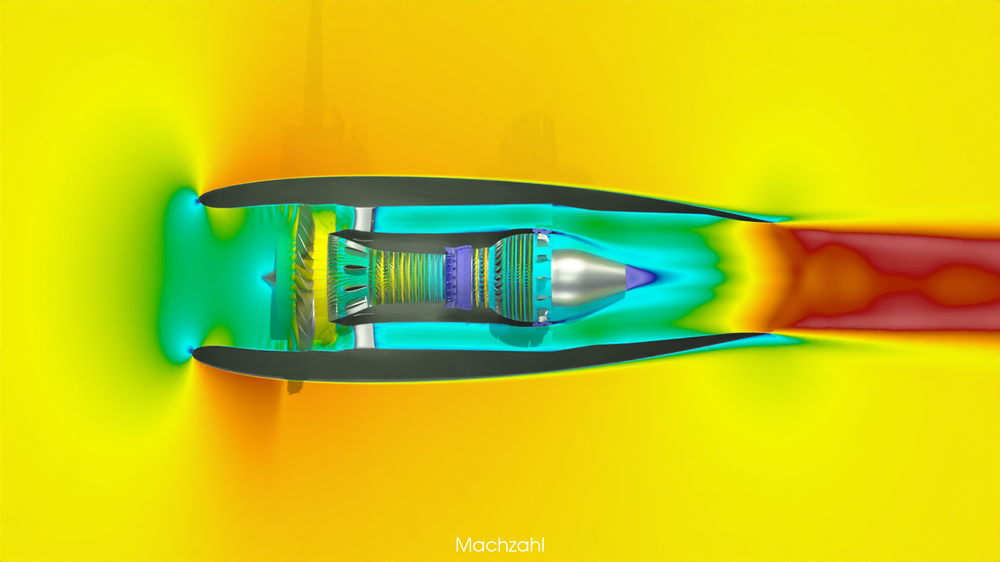
Rolls-Royce
As part of the Lufo project DARWIN, a digital simulation model of the entire Pearl engine was created for the first time in order to virtually analyse and improve the system behaviour. This model contains all components relevant to the aerothermal behaviour of the engine (inlet, bypass duct, compressor, combustion chamber, turbine and mixer) and enables the simulation of complex operating conditions that are difficult or impossible to represent in the engine test.
Further information can be found at rolls-royce.de
Rolls-Royce
Rolls-Royce develops and delivers complex power and propulsion solutions for safety-critical applications on land, at sea and in the air. Our products and services enable our customers to connect people, societies, cultures and economies.

